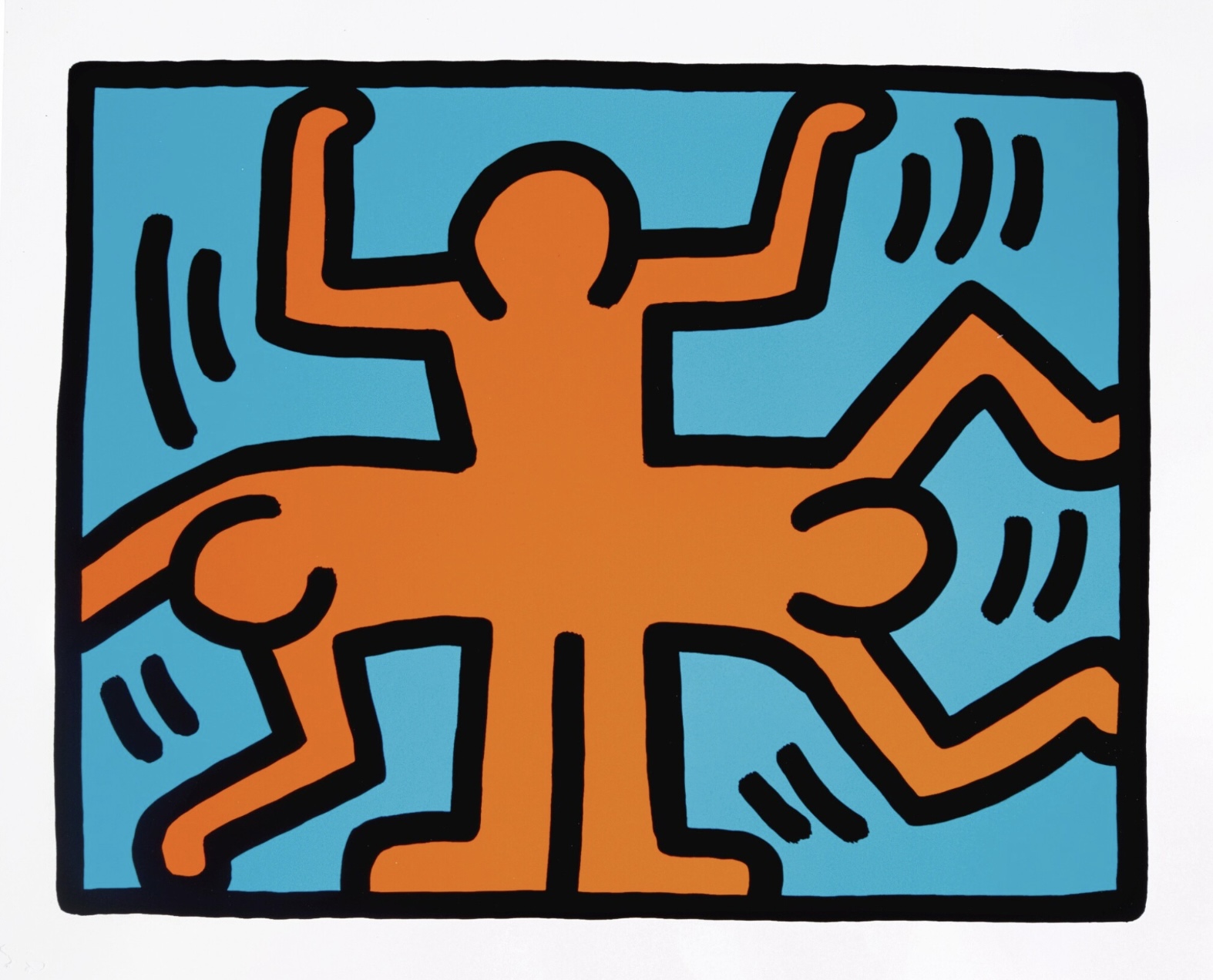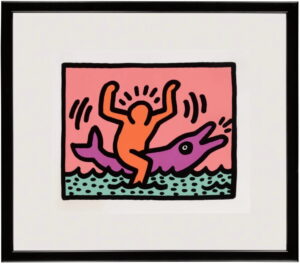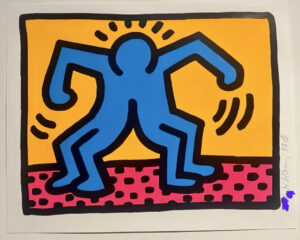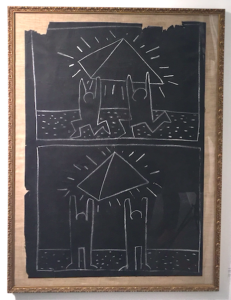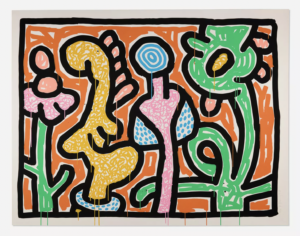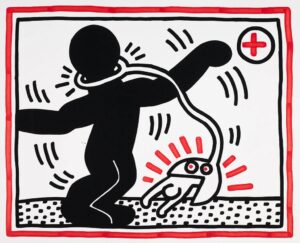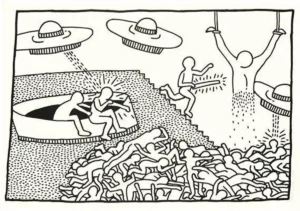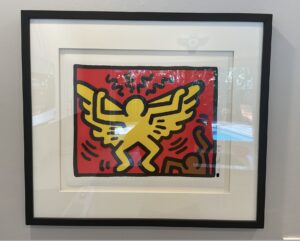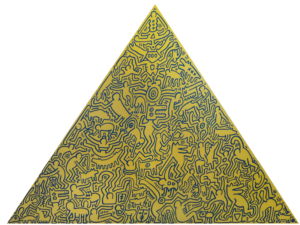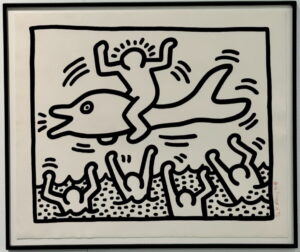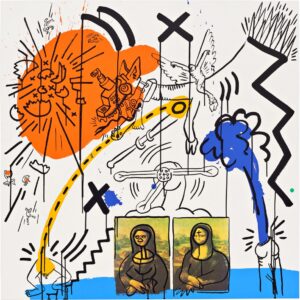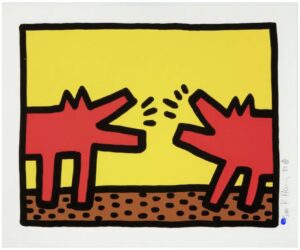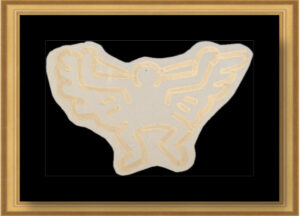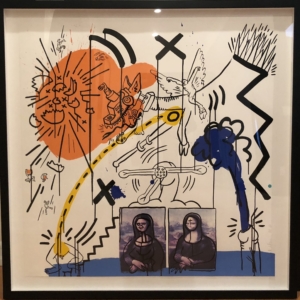Pop Shop VI (2), 1989
With the estate stamp verso, signed in pencil, dated and numbered from an edition of 200 by Julia Gruen (the executor of the Keith Haring Estate), published by the artist, on wove paper with an iguana blindstamp
13 1/2 × 16 1/2 inches (33.3 × 41.9 cm.)
All works are inspected prior to delivery, work will be sent out tracked and insured at buyers cost. If you'd like to make specific arrangements or discuss collection then please contact us directly.
Accepted: Wire transfer
ART PLEASE Assurance Policy: Every ART PLEASE seller has been approved by ART PLEASE after a thorough review. All of our sellers are required to accept the following ART PLEASE policy: A buyer may return an item purchased through ART PLEASE, if the item received is not as described in its listing, or is found to be unauthentic.
Keith Haring was a pioneering artist who rose to fame in the 1980s with his unique visual language that emerged from the street culture of New York City. Known for his energetic, cartoon-like figures and bold use of lines and colors, Haring's work addressed a range of social and political issues such as AIDS awareness, apartheid, and LGBTQ+ rights. His art transcended traditional gallery spaces, appearing in public spaces and on everyday objects, thereby democratizing art and making it accessible to a broader audience. Haring's legacy continues to influence contemporary art and activism, as his works remain powerful symbols of creativity and social engagement.
"Pop Shop VI (2)," created in 1989, is part of a series of silkscreen prints that reflect Haring's commitment to making art accessible to the masses. The "Pop Shop" series was an extension of his Pop Shop stores, which sold affordable art merchandise and aimed to bridge the gap between high art and popular culture. His "Pop Shop" series features Haring's signature motifs—radiant babies, dancing figures, and barking dogs—arranged in a dynamic and playful compositions. The works from this series, this one in particular, exemplify Haring's ability to infuse his work with a sense of joy and movement while also addressing deeper themes of community and activism. The vibrant colors and rhythmic lines invite viewers to engage with the artwork on both a visual and emotional level, highlighting Haring's belief in the transformative power of art.


